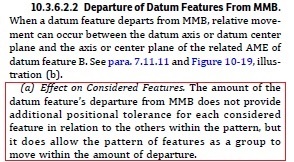Your Products have been synced, click here to refresh
Your Products have been synced, click here to refresh

Kai Kendall,
NOWHERE within the standard does it say to "simply add" the MMB to the feature bonus as this would be wrong, resulting in the acceptance of bad parts.

| © 2024 Hexagon AB and/or its subsidiaries. | Privacy Policy | Cloud Services Agreement |